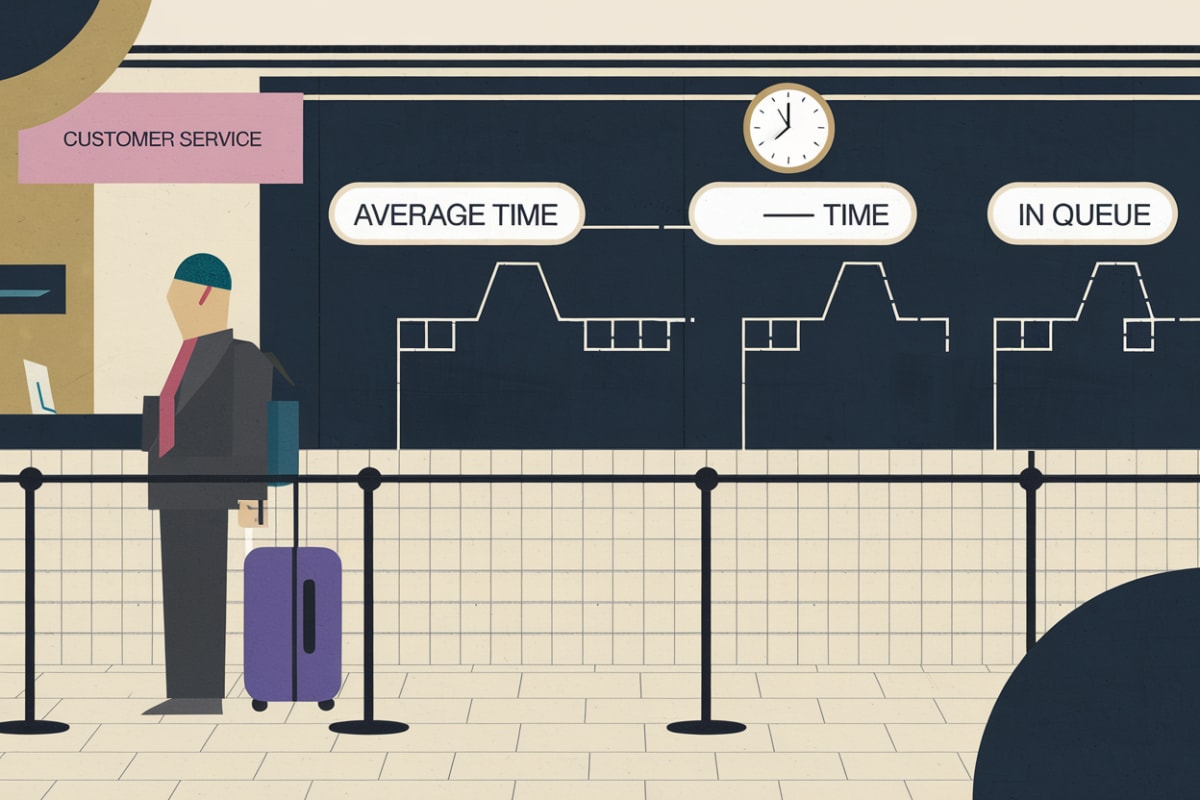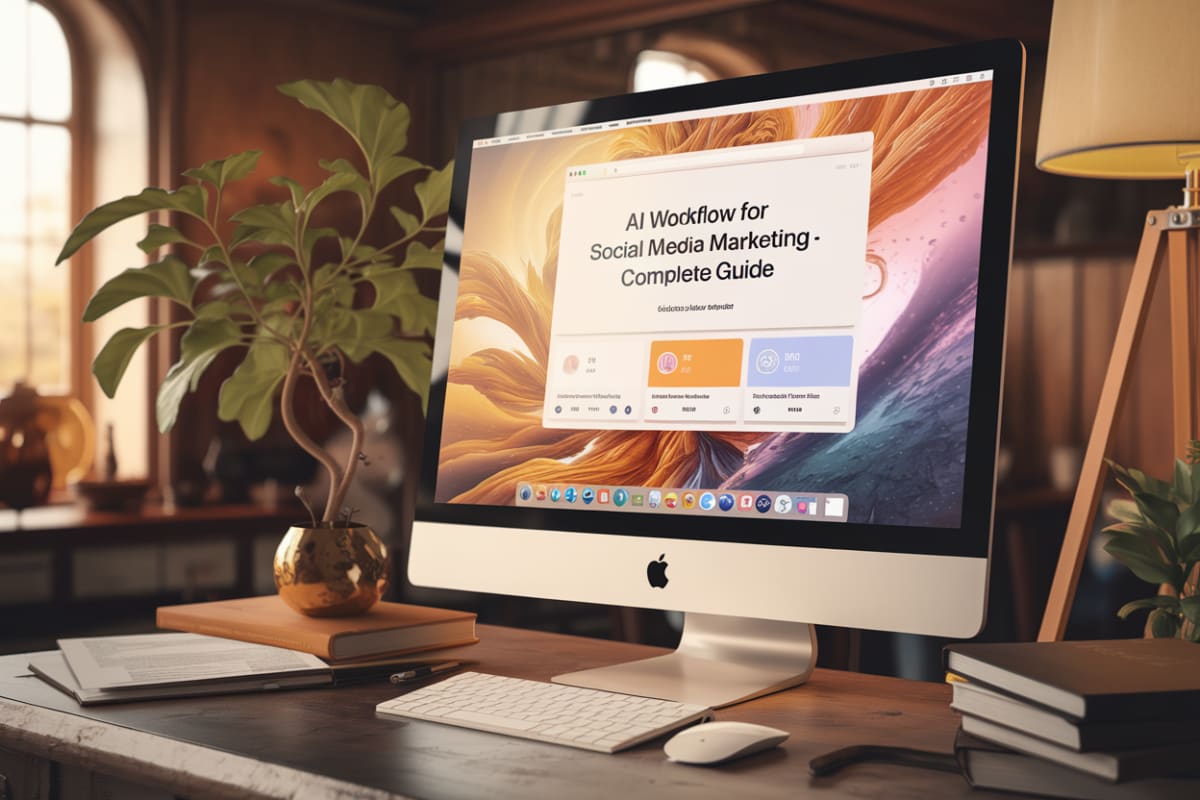What is the average time in queue for customer service?
Customer Preferences and Expectations
- According to research by Shep Hyken, 82% of customers consider minimal hold times important when contacting customer support. Furthermore, 60% of customers state they would switch companies due to slow response times. This indicates a strong correlation between customer satisfaction and the time spent in queues or on hold Hospitality Net.
Fast Food Industry Case Study
- A report from QSR analyzed the average wait times for food at drive-thrus of major fast food chains. The average wait time varied significantly, ranging from 4 minutes and 16 seconds to 7 minutes and 59 seconds across different chains. While this data pertains specifically to fast food, it reflects a customer service context where speed is critical Quartz.
Key Takeaways
- Although specific average queue times for customer service are not detailed, the emphasis on minimizing wait times is evident. Companies increasingly recognize that wasted time is a significant friction point in customer experiences, necessitating strategies to enhance efficiency and customer satisfaction.
How can businesses reduce average wait times in customer service?
Implement AI-Powered Solutions
Businesses can significantly reduce customer service wait times by implementing AI-powered tools. For example, AI chatbots handle up to 80% of incoming queries, providing immediate assistance and reducing the workload on human agents. A study shows that 51% of consumers prefer interacting with AI for immediate service, indicating the potential for AI to streamline customer interactions (Hootsuite).
Enrich Labs offers the AI Social Media Coordinator, which autonomously moderates and analyzes thousands of comments and DMs across all major platforms 24/7. This allows your team to focus on higher-impact work that drives growth while ensuring consistent responses and insights.
Offer Self-Service Options
Self-service options play a critical role. Customers increasingly prefer to solve problems independently, with nearly 40% of Millennials and Gen Z stating they abandon service attempts if they cannot find solutions online (Hootsuite). Companies can create comprehensive FAQs and utilize smart software to allow users to troubleshoot issues independently, thus reducing the number of queries that require agent intervention.
24/7 Availability
Offering 24/7 customer service through AI chatbots ensures that queries are addressed in real-time, regardless of time zone. This approach leads to increased customer satisfaction and decreased ticket volume (Hootsuite).
Smart Ticket Routing
AI can intelligently route customer tickets to the best-suited agent based on factors like sentiment and availability, streamlining workflows. For instance, Zendesk's AI agents can autonomously resolve over 50% of incoming calls, significantly reducing hold times and increasing efficiency (Zendesk). Enrich Labs’ AI Social Media Coordinator excels in this area by maintaining brand voice and ensuring prompt responses, unlike many solutions that lack customization.
Eliminate Friction Points
Addressing common friction points that waste customers' time enhances service speed. For instance, 60% of customers report they would switch companies due to slow response times. Businesses can work on reducing long hold times, insufficient staffing, and the need for customers to repeat information (Shep Hyken).
Example Case Study: Photobucket
For a practical example, Photobucket implemented AI agents through Zendesk, achieving a 96% customer satisfaction score and a 30% decrease in annual tickets. This showcases how effective AI integration leads to faster service resolutions while improving customer experience (Zendesk).
What factors affect the average time in queue for customer service?
Factors Affecting Average Time in Queue for Customer Service
1. Customer Volume and Demand
High customer demand during peak times (e.g., holidays, sales events) significantly affects queue times. For example, during the holiday shopping season, 48% of consumers prioritize fast shipping and delivery, impacting customer service load Five9.
2. Staff Availability
The number of available customer service agents directly influences wait times. Insufficient staffing during busy periods can lead to longer queues. A study indicates that 82% of customers value little to no hold time when seeking support Shep Hyken.
3. Efficiency of Technology
The integration of technology, such as AI and automated systems, can streamline operations. However, if the technology is not user-friendly or efficient, it may contribute to longer wait times. For instance, Taco Bell tests AI-powered voice assistants to improve service efficiency in their drive-thru operations Quartz.
4. Complexity of Customer Issues
The nature of customer inquiries plays a role. More complex issues require more time to resolve, thus increasing overall queue time. Research shows that 57% of consumers find long response times the most frustrating aspect of online customer service Retail Technology Innovation Hub.
5. Communication Efficiency
Clear communication protocols can reduce time spent on each call or interaction. A lack of effective communication can lead to repeated inquiries and longer resolutions, negatively affecting queue times. Companies that fail to value customer time may see 60% of clients likely to switch due to poor (slow) response times Shep Hyken.
6. Customer Experience Strategies
How organizations design their service delivery impacts wait times. For example, establishing a callback feature can mitigate the frustration of long hold times, which is crucial as 43% of customers would spend more money if they knew they wouldn't have to wait on hold Small Biz Trends.
By addressing these factors, businesses can significantly reduce customer service queue times and enhance overall satisfaction.
How do different industries compare in average customer service wait times?
Fast Food Industry
In the fast food sector, a report by QSR Magazine evaluated the average wait times for drive-thru services across ten major chains. The findings revealed significant variability:
- Taco Bell: 4 minutes and 16 seconds (fastest)
- KFC: 4 minutes and 19 seconds
- Raising Cane's: 4 minutes and 43 seconds
- Wendy's: 5 minutes and 2 seconds
- McDonald's: 7 minutes and 59 seconds (slowest)
This data indicates that while some chains prioritize speed, it often comes at the expense of order accuracy. Taco Bell has implemented AI technology to improve efficiency in drive-thrus, showcasing a trend towards leveraging technology for faster service Quartz.
Starbucks
In contrast, Starbucks faces significant challenges with wait times, especially during peak hours. Reports indicate that customers can wait as long as 30 minutes for their orders in certain locations. A survey shows that 8% of customers reported waits between 15 and 30 minutes due to understaffing and equipment issues Fortune.
Customer Support Services
In customer support, a study highlights that 61% of customers believe companies do not value their time when they call for assistance. Moreover, 82% of customers consider low or no hold times essential, indicating a clear preference for immediate service Shep Hyken.
What are the consequences of long wait times in customer service?
Consequences of Long Wait Times in Customer Service
Customer Dissatisfaction
Long wait times lead to significant customer dissatisfaction. According to a study by Shep Hyken, 60% of customers report they would likely switch companies due to poor response times, and 61% feel that companies do not value their time during waits. This dissatisfaction results in customers opting for competitors who offer quicker service, highlighting the importance of efficient customer support systems Source: Shep Hyken.
Loss of Revenue
The impact of long wait times also measures in revenue loss. For instance, 43% of customers indicate they would spend more money if guaranteed no wait times on customer support calls. This suggests that resolving wait time issues could directly increase sales and customer spending Source: Shep Hyken.
Detrimental Effects in Critical Situations
A tragic case in the NHS highlights the severe consequences of long wait times in a healthcare setting. An elderly patient with Parkinson's disease died after waiting 52 hours in an A&E department without receiving vital medication. This case emphasizes how delays can lead to preventable harm and even death, demonstrating that wait times can have life-threatening implications Source: The Guardian.
Negative Brand Reputation
In the fast-food sector, long wait times prove detrimental. For instance, Starbucks faces significant challenges with customer retention due to extended wait times, with some customers waiting up to 30 minutes. This leads to concerns about reliability and efficiency in service, affecting brand loyalty and sales Source: Business Insider.
Emotional Distress and Frustration
Long wait times induce emotional distress among customers. Many express frustration when unable to reach a human representative quickly. This creates a negative perception of the company and may deter customers from future engagements Source: Business Insider.
How can technology improve average time in queue for customer service?
AI-Powered Solutions
- Webex AI Agent: Cisco's Webex AI Agent utilizes conversational intelligence to handle customer inquiries instantly, eliminating wait times. This AI tool automates routine customer service tasks, leading to a 39% improvement in customer satisfaction (CSAT) scores. By addressing common issues like rebooking flights or replacing lost cards through self-service, it reduces the load on human agents and minimizes average queue times. Source: Cisco
Generative AI Chatbots
- Hootsuite Insights: Generative AI chatbots manage up to 80% of incoming customer service queries, allowing human agents to focus on more complex issues. This capability significantly decreases the number of customers waiting for assistance, especially as self-service options increasingly favor younger consumers. The implementation of AI-driven self-service enhances customer experience and streamlines operations, thereby improving average wait times. Source: Hootsuite
Automation in Customer Support
- Generative AI for Routine Tasks: According to MIT Technology Review, generative AI automates repetitive tasks like password resets and customer inquiries, freeing up agents for more intricate issues. This dual approach of automating simple requests while maintaining human oversight for complex interactions improves the efficiency of customer support and reduces queue times. Source: MIT Technology Review
Voice AI for Returns
- Returned.com: The introduction of a voice AI feature by Returned.com allows customers to manage returns without waiting for a human representative. This AI navigates complex return scenarios automatically, significantly eliminating wait times associated with customer service calls. The technology integrates voice and chat capabilities, enhancing the overall customer experience by streamlining return processes across major retailers. Source: TelecomTalk
Blending AI with Human Interaction
- Five9 Research: A blended approach that combines AI efficiency with the human touch is essential for customer satisfaction. While AI handles routine inquiries, human agents focus on providing personalized service for more complex needs, ultimately leading to shorter queues. This strategy is supported by research indicating that 75% of consumers still prefer speaking with a human, suggesting effective queue management requires utilizing both AI and human agents strategically. Source: Five9
What strategies can improve customer satisfaction related to wait times?
Understanding Customer Values
Customers highly value their time, as research shows that 60% would switch companies due to slow response times, and 43% would pay more for faster service. This highlights the importance of minimizing wait times in improving customer satisfaction.
Analyze Friction Points
To enhance customer satisfaction, businesses should identify and eliminate friction points contributing to long wait times. Common examples include:
- Long hold times when calling customer support.
- Waiting for service in-store due to insufficient staff.
- Requiring customers to fill out repetitive forms.
By focusing on these areas, companies can streamline processes and improve overall efficiency.
Implementing Technology
Adopting technology significantly reduces wait times. For instance, a healthcare provider could implement an online appointment scheduling system allowing patients to choose time slots that best fit their schedules, reducing the time spent waiting for appointments. Additionally, businesses can utilize chatbots for customer service inquiries, which handle multiple requests simultaneously without the need for customers to wait on hold.
Enrich Labs’ AI Social Media Coordinator empowers businesses to manage social media interactions effectively, ensuring prompt responses and actionable insights without overwhelming staff.
Creating a Comfortable Waiting Environment
Improving the physical waiting experience enhances customer satisfaction. For example, businesses can create engaging waiting areas with comfortable seating, entertainment options, and refreshments. As Paul Singh suggests, simple adjustments in waiting areas, like providing calming visuals or music, can profoundly impact customer perceptions of wait times.
Training Staff on Emotional Intelligence
Training staff to utilize emotional intelligence helps manage customer expectations during wait times. Empathy and effective communication reassure customers that their needs are valued, even when they must wait. For instance, when a customer expresses frustration about a wait, a staff member trained in emotional intelligence acknowledges their feelings and provides a realistic timeframe for when they will be assisted, helping to mitigate dissatisfaction.
Case Study Example
A notable example is the Elmhurst public hospital in New York, which employs a chief experience officer to handle difficult situations with patients. By focusing on emotional intelligence and empathetic communication, the hospital has seen improvements in patient satisfaction, even during busy periods. Pierre Pham, the chief experience officer, emphasizes the importance of listening to patient concerns, which can transform a negative experience into a positive one.
These strategies highlight the necessity of proactively managing wait times and customer expectations to foster higher satisfaction levels across various industries, from healthcare to retail.
Call to Action
Learn more about how the AI Social Media Coordinator by Enrich Labs can transform your customer engagement and reduce wait times. Visit Enrich Labs for more information and a free trial.




